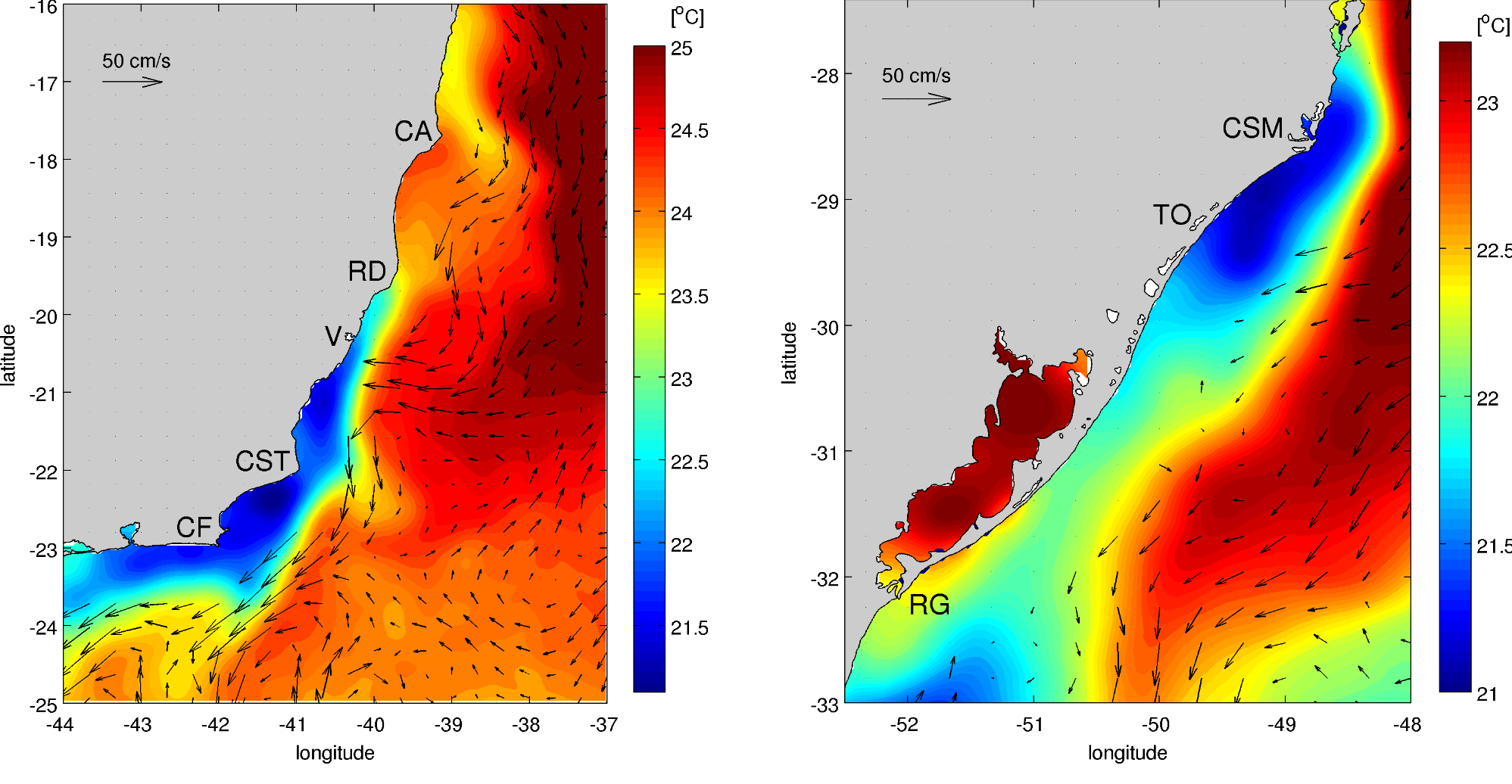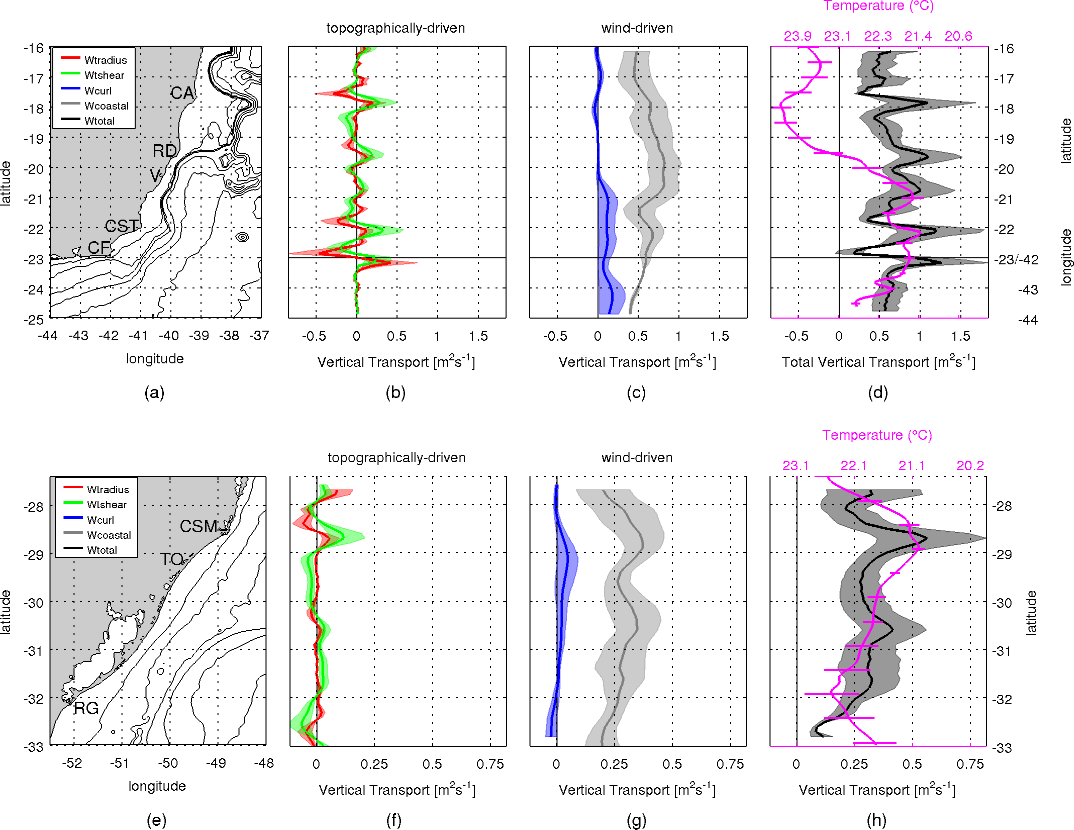Upwelling off the Brazilian coast
Several mechanisms can drive vertical velocities in the coastal ocean, including wind-forcing and through gradients in the vorticity field generated by flow-topography interactions. In this work, we studied the two major upwelling systems off the Brazilian coast: Cabo Frio and Cabo de Santa Marta.
Using a combination of satellite remote sensing data and analytical theory, we addressed the effects of wind-forcing and flow-topography interaction in the vertical transports over the continental shelf, and with this work, we learned that on larger scales, the sea surface temperature variability along the coast is mainly controlled by wind-driven upwelling, while upwelling due to flow-topography interaction (e.g. flow around capes and perturbations of the coastline) is responsible for the smaller scale sea surface temperature variability.
In the vicinity of capes and coastal features, topographically driven upwelling plays a significant role, and its vertical transports can be as large as the wind-driven transport. The enhancement of upwelling in these regions is known to have a major impact on the local fisheries.

Sea surface temperature and geostrophic velocities for the two main upwelling centers off the Brazilian coast: (left) Cabo Frio (CF: Cabo Frio; CST: Cabo de São Tomé; Vitória; RD: Rio Doce; CA: Caravelas) and (right) Cabo de Santa Marta (CSM: Cabo de Santa Marta; TO: Torres; RG: Rio Grande) during March 2012.

Upwelling due to different mechanisms estimated along the regions of (top) Cabo Frio, and (bottom) Cabo de Santa Marta, Brazil.
Publication:
- Mazzini, P.L.F., and J. A. Barth. A comparison of mechanisms generating vertical transport in the Brazilian coastal upwelling regions. 2013. Journal of Geophysical Research: Oceans , 118, 59775993. [JGR]